The Ministry of Defence has reiterated that Project Grayburn, the British Army’s effort to replace the SA80A3 service rifle, remains in its concept phase, with early work focused on defining capability needs and engaging with industry.
In response to written parliamentary questions tabled by Ben Obese-Jecty MP (Conservative, Huntingdon), Minister for Defence Maria Eagle confirmed that the programme is still at the exploratory stage.
“Project GRAYBURN is currently in the concept phase with the aim of identifying and understanding the capability requirements,” she stated, adding that considerations include “performance, interoperability and complexity.”
While full details remain under wraps due to commercial sensitivities, the Minister noted that further updates will be outlined in the forthcoming Defence Investment Plan. The plan, expected in the autumn, will replace the current Defence Equipment Plan and expand on capability investments set out in the 2025 Strategic Defence Review.
The British Army currently fields the L85A3, the latest variant of the long-serving SA80 family, as its standard-issue rifle. First introduced in the 1980s, the SA80 underwent several overhauls to improve reliability, ergonomics and weight distribution, culminating in the current A3 version.
Despite these improvements, the Army has acknowledged the need to move towards a more modern platform. The projected out-of-service date for the L85A3 is currently 2030, and Project Grayburn has been established to identify and deliver its replacement.
As part of early concept work, the Ministry has confirmed that “various rifle calibres are being considered”, alongside design characteristics such as adaptability to optics and modular attachments. Eagle also noted that the Army is taking “measures to mitigate any risk of potential capability vulnerabilities” during the transition period.
The MOD has already held discussions with manufacturers and industry experts to evaluate how the Land Industrial Strategy and UK production capacity might influence the future weapon’s development. While the overall cost of the programme remains unknown, it will depend on the eventual scope and complexity of the selected design.
Project Grayburn aims to produce a next-generation individual weapon tailored to the evolving demands of modern conflict, combining reliability, lethality and interoperability with allies.


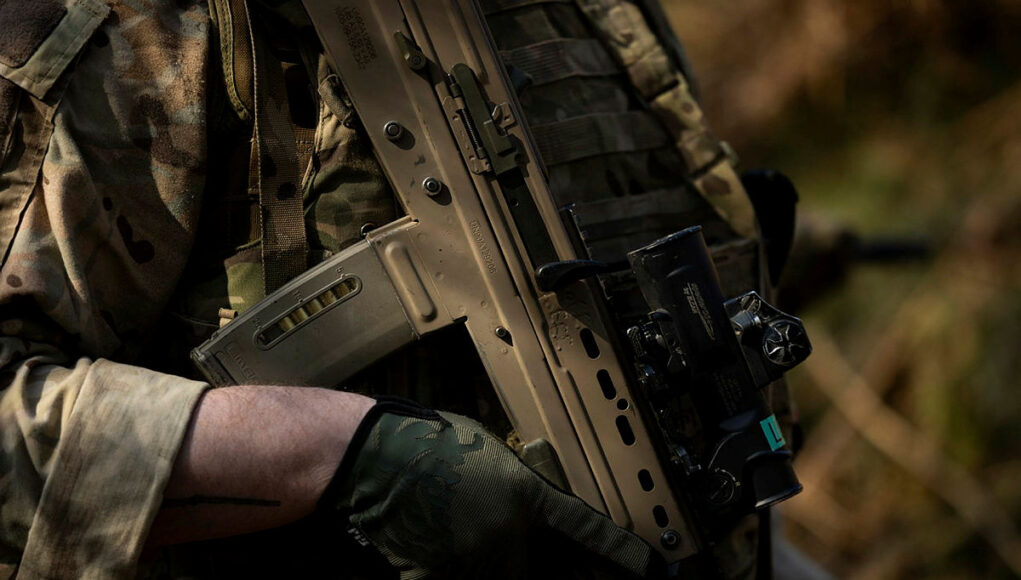
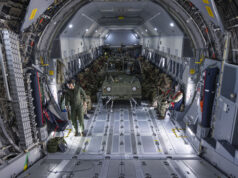



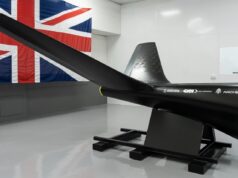
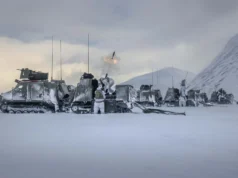

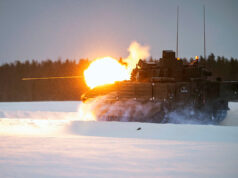

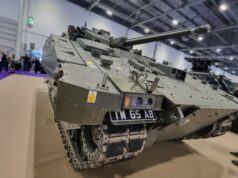

Good to see the govt and MoD reacting at pace to the evolving threats to this country and our way of life.
Probably don’t want the protracted shit show that was the SA 80
Also replacing the A3 and the A2 is, all things considered, a very low priority.
Absolutely! The current inventory is fine and, as you say, not the highest priority given the rest of the mess the Army is currently in.
Perhaps they’re trying to work out an industrial strategy to underpin the procurement. If this is really the case, I would be happy with a delay if it meant we developed a long-term capability to manufacture and maintain our small arms.
I think it’s a combination of there not being a huge rush, and there being a lot of choices to make. As you said there’s a lot of people here saying “we should get this rifle or that rifle” but they are gauging those rifles against their own personal checklist of what they think is important in a rifle design. The Army first needs to decide what that checklist is, and how to weight it, and there will be, I suspect, some very warm discussions about how long we want a rifle to be, what features we absolutely do not want, how accurate we want it to be, how much we are willing to spend etc.
We’ve discussed this before, but litteraly everything apart from the TMH has been replaced in the A3, compared to the A1.
So build some TMH’s a very straightforward construction of pressed steel and the A3 could remain in service for decades.
I agree, not a high priority. Just procure 30,000 Knights Armament AR’s for the ‘teeth’, an absolutely superb piece of kit, having had the opportunity to have a play with one a few week’s back.
A load of the internals for the TMH have also been replaced, so it’s more like “the actual frame of the TMH is the original design.”
I’m still pushing back on the idea of getting KS-1’s for the wider army. They are phenominally expensive for a basic infantry rifle, they also are not the most rugged of weapons. They shoot fantastically, and are amazing to handle, but it’s a high end bit of kit for high end units, not really suited for frontline infantry in large numbers.
I remember the good old days of the British army in the 80’s and 90’s with a service rifle that barely worked and a main battle tank where half the fleet were missing engines.
Not like any of this namby pamby nonsense now a days with global testing regimes and the like 😀
In the end a rifle is very much a rifle.. it’s going to make sod all different to the lethality of a section, platoon, company, battalion or brigade battle group.. they need to consider a new rifle because the SA80A3s are getting old and worn out so as long as they change the rifle in good time it’s fine.. the reality impactful bits are fires, IFV cannons, new APCs, communications, getting CS,CSS for all the brigades.
There are plenty of good rifles they can get off the shelf in a short space of time.
I’m ex-RN and don’t know much about Pongo-type things so I was surprised to hear how lethal mortars are when compared to small arms fire.
I’d obviously watched far too many war movies as a kid and so assumed that most battlefield casualties came from rifles and machine guns when in fact it comes from above, from mortars, artillery etc. (and quite possible drones as well now).
To be fair that is endemic in society. Movies are terrible at depicting how wars are fought, and what does the majority of the killing. There’s a all around terrible unpublished book that was floating around the internet in the 2000’s that was a fever dream of the Book of Revelation meeting NATO operations in Iraq. It was unpublished for a reason, but one of the things it did well was depicting exactly how a modern (well, late 90’s early 2000’s) army would fight in that situation and just how lethal it is. I think that’s one of the very few “pop culture” (is it pop culture if it was a niche manuscript that was self published on the authors own website?) that kind of got modern tactics and fires right.
To put that in perspective, when as a new pup in Gulf War 1. We visited Hells Highway, where Saddam’s troops got caught on the highway coming out of Kuwait. It was a very visual demonstration of what air power alone can achieve. However, what I think Dern especially will agree on is the grid square removal tool that was the M270 MLRS with cluster munition rockets. This system alone removed a whole Battalion of Iraqi Republican Guards that were dug in just north of the Kuwaiti border with Iraq. Again very sobering to witness.
DaveyB, definitely agree! Can’t argue with a Grid Square Removal System (Also one of the reasons I’m always going on about Corps level fires in ENATO).
In the Ukraine war I saw something that said that only 5% of Russian casualties were caused by troop-on-troop. It is drones, mortars, arty. and air-dropped bombs that do the bulk of the killing.
That’s about 50,000 at current count, if the same plays out for Ukraine and other “interested parties” you get between 72,000-76,000.
Or looked at another way, more than the entire trained strength of the British Army currently. A minority, but a significant one.
Agree- CZ 805- Bren 3- Scar H and L variants,, Heckler and Kock – HK416, Haenel MK 556, Beretta ARX160, Japanese Howa type 20, South Korean K11 DAW with integrated grenade launcher, Turkey’s Kale KCR, Robinson Armament XCR, Remington ACR, Sig MCX – all could be purchased off the shelf with potentially UK manufacturing as a term of contract- realistically the UK armed forces need 100,000 new rifles- with an average battlefield rifle fully tricked out costing around £7000-8000 that’s not going to break the UK bank but will ensure viability of armed forces to arm and equip a good chunk of reserves and volunteers should god forbid we end up in a high-intensity war. £800 million to £1 billion should easily cross off the requirement.
Obviously if we go for the US XM7 and MX250 price will be much more than that, plus we wouldn’t have the munitions infrastructure to operate the new rounds and that would have to be built up.
Hi Jonathan, the L85 A3 is very much triggered broom.
They are far from worn out, as HK are manufacturing 90% of the parts to rebuild them.
An A3 rebuild is in effect, a new Rifle.
Only the TMH is original and passed down from the A1/2.
I believe I pointed out that the KS-1 acquisition was very quick (especially if you start counting from when the public became aware of it), and that Grayburn was not going to bring a weapon system into service any time soon. I’d be surprised if all the L85A3s (or even A2’s, as PG rifles are going to cascade A3’s to rear echelon units) are out of service by 20300.
HK416 or SCAR seem like solid choices
my 2 cents
Czech Bren 3s are apparently well-liked in Ukraine, and a different platform to the AR which doesn’t cost the earth.
We won’t get it. We probably should get something off the shelf but I think the MOD will copy the USA army and get the 6.8mmx51 calibre XM7 and XM250 weapons.
Would prefer it if we didn’t but the increased range, accuracy and stopping power over 7.62 and 5.56 is appealing to give troops a combat advantage, especially Vs lightly armoured troops wearing modern composite armoured vests that likely can’t be penetrated reliably by 5.56 or 7.62
In 1995, you seldom encountered an opponent wearing any type of body armour. Fast-forward to Gan, and the dickers were swanning around with it on. Their stuff was better than the Osprey body armour we were wearing. We need to be sure we can defeat the latest body armour, and to do that, it might mean copying the US.
Interesting thread about this matter on BFBS you tube from royal armouries. In essence it will go down to a 6.8 creedmoor or the Grendal round. The US military have switched to their new service rifle XM7 6.8mmx51 and squad automatic weapons XM250 so I’d imagine the UK will go for the same calibre. Or as an alternative back to 7.62 but with newer versions with a lighter weight round which would mean magazine size grows to deliver the same number of rounds the SA80 can.
I think we’ll just copy the USA but make all the ammo within the UK but likely and hopefully keep the SA80 A3 as a reserve battlefield rifle in case we rapidly need to arm 100,000 volunteers. That would make a lot of sense.
No such animal as the 6.8 Creedmoor, there is the 6.5 Creedmoor adopted by Royal Marines to replace the 7.62 in the L129A2. There is the new US Army 6.8mm Sig Sauer, very expensive as case made of two parts, SS head and brass body to take the high pressure, US Army had to build a new plant at Lake City Arsenal to make it, cannot train with it on ranges as exceeds the safety limits and also heavy as only 20 rd magazines compared to the 30 rd 5.56mm magazines, US soldiers carry 7 magazines so large reduction in firepower. The DOT&E report was not very complimentary as problems with both M7 rifle and its scope, also reports surfacing that in the M250 machine gun some of the two part cases separating.
I’ve fired the CZ805- Bren 3- its a very well balanced and accurate gun- cant compare to SA80 as never fired one but the Bren would get my vote as its an off the shelf design and the British army has history of using Bren’s products, I’m sure UK manufacturing could be built into the contract- maybe 50% of rifles built in Czech republic and 50% in UK with UK then able to ramp up manufacturing if required to go above 100,000 rifles from the initial contract- there is a light section support weapon in development and the Bren 2 assault carbine also used by French GIGN special forces- so multiple variants could be purchased reducing costs for more niche and specialist roles.
Price is reasonable- the Czech military reportedly paid around £4K equivalent for their rifles, including optics, which isn’t bad and of the options would probably represent the cheapest way to get a reliable military grade rifle off high quality.
Jeez don’t overthink it, just buy a lightweight AR-15 derivative and move on to other things.
Ukraine has throughly disproven the idea that we need a longer range cartridge with better penetration.
Speaking of Ukraine, Why not ask our Ukrainian allies what their favourite is, and buy some of those?
Czech Brens have apparently been rather popular, and are a nice alternative to AR15s that aren’t all gold-plated and bespoke.
Because Ukraine is operating under different constraints than we are, and the MoD will have it’s own priorities which will not necessarily align with what any given individual in Ukraine has to say.
Agreed, different constraints and waging war based upon their own capabilities- so we do definitely need to be careful which lessons to take.
However, I would suggest that assault rifle requirements in Ukraine are a lot more applicable to likely British Army experience in a future war than force mix of AFVs and drones (for example).
It’s at the very least a significant data point for the MOD to consider, and potentially one more relevant than Afghanistan in terms of engagement range, performance against likely combatants (in relatively modern combat gear, etc.) and that kind of thing.
As Dern says, yep, under different constraints
Ukrainians need anything and everything!
The Ukrainians used rifles such as the Ukrainian Malyuk 5.45mm bullpup rifle early in the war.
Eventually, the western rifles took over
And they now receive so many types and makes of rifles from the state and fundraisers, it would take way too long to deal with!
You wouldn’t get an accurate enough answer 🤔🤣
Oh, and they all have their personal favourites with rifle modifications etc. and ammunition
Same with the sniper rifles, highlighting that the 375 caliber is the best cartridge of choice.
The British Army will faff about as normal and drag their feet over details, and ask for a GUCCI requirement
I think it will be an off-the-shelf European model
Admittedly, it might be like asking special forces, with their rather bespoke approach to arming themselves!
But, at the same time, a lot of the more well-run battalions (and apparently it varies wildly) have common equipment- whether it be all AK-series in 5.45 or all Bren 3s in 5.56, etc. All we need to know is how they find they perform, as a point of reference for high-intensity combat in Europe I think it’d be pretty valuable.
The problem with that statement is that the world is awash with Ar-15 derivatives. Project Hunter (the project that ended up with the procurement of the KS-1/L403 for the Rangers and Marines) was literally just a line of up AR-15 variants. But even here, I think if you said it has to be an AR-15 derivative and therefore ruled out the FN SCAR and the CZ Bren 3 there’d be at least some push back.
As it stands I suspect the MoD is still in the business of deciding what the criteria it wants to judge applicants by, we are a ways off from hearing what exactly the requirements for a bid are.
The criteria should absolutely center around accuracy, reliability, ease of use and weight.
A UK company partnership to build the successful rifle design in the UK should also be a non negotiating point too.
We have to have UK small arms manufacturing capability back.
Not arguing what is or is not the key criteria, just pointing out that’s a really easy statement for a single person to make off handed in a comments section and not have to weigh those, or convince, essentially, the rest of the army, that your weighting and choices are the right one.
Hence why these things take a while to get to the actual trials stage.
Yes . I think section platoon drones now cover that distance beyond 500m where the 7.62 or 6.8 would have been useful . And the 5.56 with a lighter weight gun the way to go. As it seems infantry soldiers will now be underground hiding from drones or being bought to the front line by vehicle for the last few hundred metres of an assault so the 5.56 back in fashion
Not my field but if we want interoperability (and soon?) should we not just buy something that is already out there and used by our allies?
Designing bespoke solutions and finishing up with something that is UK-only kit has hardly a stellar record.
This is a field where interoperability is kind of a moot point. Your average British soldier is highly unlikely to need to use a Estonian, Polish or German weapon. The only huge benefit of interoperability is with ammunition, and we all use 5.56 and 7.62 already. However as we don’t make our own rifles anymore, we are probably going to buy something off the shelf simply because that’s what the option will be.
I really do hope that future soldiers do not have to suffer with Project Grayburn as I did using the L85A1 and L85A2, and that the L85A3 replacement is reliable and, well, just works. To me, the least worst option is to buy something off the shelf, a rifle that has been tried and tested in combat by serving soldiers and not a new project that has ‘value engineered’ by civil servants and retired officers, and is over budget, over due, no real world testing, and based on last years specs and wars not the future.
This is a nitpick. But why is the MOD calling it Project Grayburn, and not Greyburn?
Likely named after someone🤔🤷♂️
Pretty sure that Project and Operation names have been randomly generated since at least the 1980’s.
I was more wondering about the MOD using the American spelling of Grey. I did say it was a nitpick. lol
Nitpicking or being pernickerty?(Andy Hamilton joke)
Most of the recent small arms projects are named after WWII posthumous VC recipients: Grayburn after Captain John Hollington Grayburn, Hunter after Corporal Thomas Peck Hunter, the replacement for the L7A2 in its “light role” is Project Cairns, for Lieutenant George Albert Cairns, and the one for replacing the L115A3, A4 and L118A2 *was* Project Keyes, for Lieutenant Colonel Geoffrey Charles Tasker Keyes, but that has been changed to Project Shamer, which I assume is just a randomly generated name. Having read up about Keyes, it seems the truth of the actions that resulted in him being awarded the VC are contentious, so that’s probably why it was renamed.
Also, the RM adoption of the MCX is Project Hay, for Ronald Cuthbert Hay, DSO, DSC & Bar, not a posthumously VC, but the only Royal Marines fighter ace!
Maybe it’s named after Captain John Hollington Grayburn VC..?
Fair enough. I thought it was the mod continuous use of the colour code for projects.
Whatever rifle is eventually selected, we need to manufacture it here even if under licence.
Whether it makes sense to select a new caliber, I’m not sure. Most NATO forces, including the USMC continue to use 5.56 mm., so interoperability would suggest sticking with the NATO standard makes most sense.,
I personally agree with that. I can see why a lot of posters on here focus heavily on the weapon itself (as ex-users of the kit, it’s completely understandable) but I think we should always remember to take a much wider strategic/operational view and consider all the backroom stuff (manufacture and maintenance, and hopefully design) as much a part of the ‘weapon system’ as the rifle itself.
And who knows, spreading the economic and commercial benefits of military procurement across the UK might help to build a robust, long-term consensus for higher defence spending! Cheers.
OT – US struck Iran 3 nuclear sites with B2 and GBU 57. we will have to wait for after action reports, but looking good so far.
Not sure how starting a war with Iran can be “looking good”…
Beretta are looking to submit two options:
• NARP (5.56mm)
• Sako M23 (5.56mm and 7.62mm)
They look good weapons
I suspect they will do some hair removal over cal 5.56mm, 6.8mm or 7.62mm, each has its advantages and disadvantages and with the US moving to 6.8mm the default 5.56mm has lost its shine a bit, but Germany has stuck with a new 5.56mm option…choices.
Concept phase and engaging with industry. 2 phrases right there to send shudders down the spine…
Please can European Nato adopt 6mm Arc, or 6.5mm Grendel or 6.5mm FN LICC. Any of those is way better than 5.56. Also if you want a decent barrel length without the rifle being too long, then you are back to a bullpup. Austria & Israel to name just two of many, produce far better bullpups than SA80.
The Austrian Steyr is OK, Israeli IWI TAVOR not sure- both are old designs now, might be new fresher, better options out there- off the shelf designs- the British army shouldn’t over think this- no gold platting, no Gucci kit- just test 4 or 5 battle rifles and make a choice- as long as the UK manufacturing licence and tooling is included that will be fine- we could do a split- 50/50 with the country of origin and buy 50% from them, 50% from UK manufacturing and then once we’ve got 200,000 new rifles any more than that come from the UK manufacturing facilities under license.
I’d also suggest retaining all the Sa80 A3s and a good chunk of the A2s until such time as we categorically don’t need them as we have ability to rapidly produce more rifles within the UK and have already built up a contingency reserve of tens of thousands of rifles. We have to have the ability to rapidly arm a reserve and volunteer force of +100,000 and then have the ability if required to go above that number.
CZ 805 Bren 3 at £4K per rifle would be the most cost effective option.
IWI makes the Tavor in 300BLK as well as 5.56, so they are open to other calibres. The Steyr Aug keeps getting updated. Think they are on their A3 model. Another bullpup is the Springfield Helion.
AR style in 6.5mm grendel. Would be a great Weapon. But off the shelf prob a shorter H & K 417 infantry version an just go back to 7.62.
I would personally keep it simple with a direct gas impingement AR, the Knights Armament KS1 is a very impressive rifle.
If it was down to me, I would have KS team up with a UK manufacturer and build 200,000 of them here.
I would agree that many thousands of L85A3’s should be stored as war reserves.
Having used both the A1/A2 version of the L85, a number of AR platforms including the C7 and the HK416. My experience would sway to the 416, or another AR like platform using a short stroke piston. The AR platform is very ergonomic and intuitive, allowing you to quickly build muscle memory, when dealing with a reload or stoppage, plus you don’t have to cross your left hand over the weapon to do it. Additionally the ejection port is quite a bit in front of your face, allowing you to fire ambidextrously from either shoulder. The disadvantage is that compared to the bullpup design of the L85, with a similar 20″ length barrel, the weapon will be quite a bit longer.
The primary reasons for this choice is reliability. With direct impingement, the gas along with a propellent and its by-products are deposited in the gas tube and on the face of the block and around the insides of the upper receiver. In the main this is not too bad, especially if you keep on top of the cleaning. However, when using crap ammo, that burns particularly dirty, the deposits build up to such an extent that when in a long contact, you will start to suffer misfeeds, as the block isn’t cycled fully. With the short stroke piston you have the option of turning the gas regulator, thereby increasing the hole size. Which allows you to keep on firing and delays the build up that bit longer. You will still need to clean around the regulator. But the block and upper receiver will be cleaner.
A lot of the so called expects prefer gas impingement, as they believe the motion of the gas piston pushing at the top of the block, causes the block to be pushed back at an angle. Thereby causing wear to the upper receiver and block. However, it does this after firing 20,000+ rounds when it becomes noticeable, it won’t stop the rifle from functioning. They also believe that the motion of the gas piston causes the aim to rock, but is really any worse than the normal recoil action? I couldn’t tell any difference. Without the gas piston, the rifle is slightly lighter, but not massively. So in the grand scale of things does it really matter. The rifle is a tool at the end of the day, not an ornament!
It is also important that the new rifle can be fitted with either a moderator or a bayonet.
Yeah the KS 1 is a great weapon. Knights UK would be a good set up. My old mates at 45 have told me good things about it. However i think they will buy into this bigger calibre requirement like the yanks for defeating modern body armour.
They are a great shooters rifle. But it’s a bit like going to your boss and saying “I think we should all have Ferrari’s as company cars.” Great idea from the point of view of the guy driving it, but not really ideal from the companies point of view.
I suspect they will put this off until they see the new US calibre in combat, to see if the concerns around the larger round out weigh the advantages it brings. Especially as going for a non NATO standard calibre would cause stockpile issues.
What a waste of time. Just roll out the KS1 for the rest of the Armed Forces. It would save the taxpayer a fortune.
Buying a rifle that costs 10k per unit and even the royals haven’t taken up for their whole force will save the taxpayer money?
That’s a novel take.
The 5.56mm is a fait accompli, though do like the 6mmARC with its new generation of heavier and longer high BC bullet and cartridge short enough to fit the lightweight AR-15 rifles, but the ‘best the enemy of the good’.
Numerous high class AR-15 assault rifles available that have improved on the M16/M4, e.g. as mentioned the KS1 or the LMT R20 etc
The SA80 was for all intents and purposes an AR16/M4 variant. That design jammed a lot. See Vietnam and after. The U.S. have chosen an over powered 7/6.8 mm cartridge and that is what we will get.
The 6.8mm M7 reminds me of the 7.62 M14 which had the shortest life of any US Army rifle and replaced by the 5.56mm M16/M4
The United Staes has decided. Once again they have chosen badly. That is all.
This programme is as ill-advised as the US Army’s M7 rifle. The most important aspect of war is logistics. NATO needs to agree on any new standard calibre but yet again the Septics have put the cart before the horse (and it seems there are plenty of critics of their shiny new toy). The UK absolutely must not adopt a unique cartridge and therefore any new small arms before agreement is reached with our allies. Do people never learn?
What are you on? Nobody in the UK is talking about adopting a non NATO cartridge.
Ah. So you think the plan is to buy a new 5.56 rifle right after the US starts to move to 6.8? That makes perfect sense.
You know that 7.62 remained in service as the standard infantry round for many NATO countries for decades after the US made the switch to 5.56 right?
So yes. While the US is messing about with the M7 and not making huge moves to replace the M4 at scale, and the UK makes zero noises about anything other than 5.56, the next rifle is probably going to be 5.56….
But by all means, feel free to hallucinate things that aren’t being said.
That aged well. https://ukdefencejournal.org.uk/bdt-uks-project-grayburn-pitch-to-re-arm-british-industry/?fbclid=IwY2xjawLtr6JleHRuA2FlbQIxMQBicmlkETFiWkdRN1pKbk1iemlqV1VSAR4Uh6lTm5gM07mgCCEj6KVf7sYxwKSUQ9EF2tZQNdo3iAWhleANenXrnYvLCQ_aem_9wARG-h4t6HRjtxSTe6paw